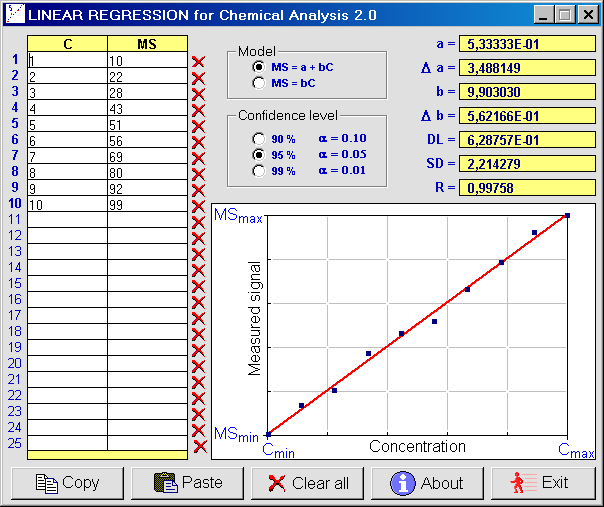| Learning by Simulations has been developed by Hans Lohninger to support both teachers and students in the process of knowledge transfer and acquisition . Click here for more information. |

Home  Statistics Statistics  Linear Regression for Chemical Analysis Linear Regression for Chemical Analysis |
|||||||
Share this Page:







Linear regression is a commonly used method to establish a quantitative relationship between two variables (e.g. the absorbance at a specific wavelength and the concentration of a particular compound). In the case of chemical analysis there is a special condition, which prohibits, for example, negative concentrations of a given substance. Knowing this fact one can determine the detection limit. The detection limit, or LOD (limit of detection), is the lowest quantity of a substance that can be distinguished from the absence of that substance (a blank value) within a stated confidence limit (generally 1%).
Many thanks to Ihor Patsay, Ivan Franko National University of Líviv, Ukraine, who contributed this linear regression tool for chemists to the Learning by Simulations Web site.
|
|||||||
Last Update: 2012-Jul-14



